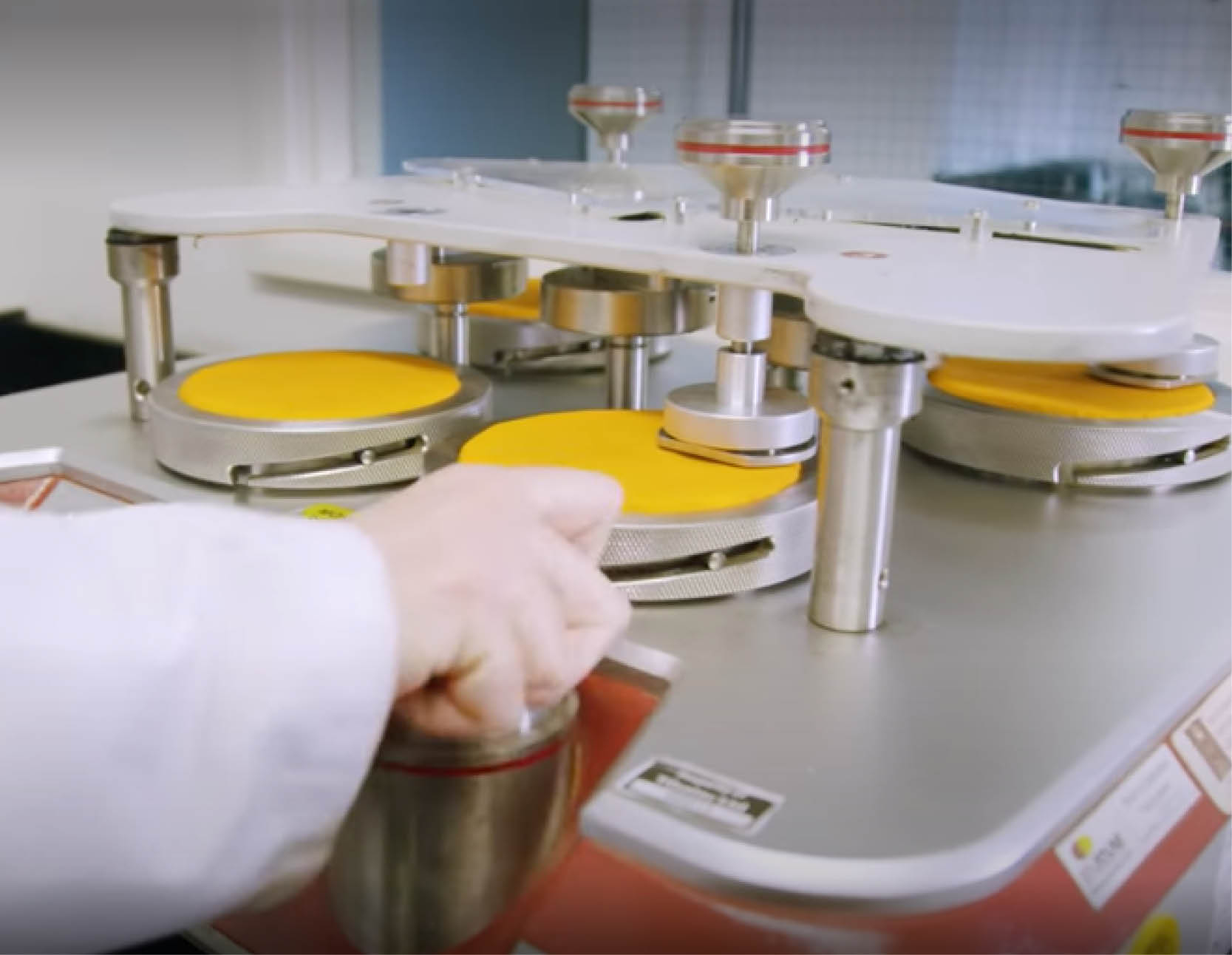Why is Testing for Abrasion Important?
Abrasion resistance refers to the ability of the glove material to withstand wear and tear when in contact with machinery and rough surfaces. A high resistance to abrasions on the glove can significantly reduce the chance of occupational injuries and maintains the longevity and durability of the gloves.

EN388:2016+A1:2018 Abrasion Resistance Test Method
The test is performed on a Martindale abrasion tester and involves rubbing four circular specimens, taken from the palm of the glove against grit 180 abrasive paper.
The sample moves in a Lissajous pattern under a 9KPa load and is checked at intervals for any sign of abrasion and holing through the samples. Failure is confirmed once a complete breakthrough of the sample is observed. The final performance level is based on the lowest number of cycles in which any of the four specimens show signs of breakthrough.
How is the Abrasion Resistance Test Measured?
The greater the number of cycles it takes to break down the safety material, the higher the abrasion resistance rating, there are four levels of abrasion in which a glove can be classified with the maximum being a level four, this is where a glove surpasses 8000 rubs without demonstrating any complete degradation through the materials.

…





